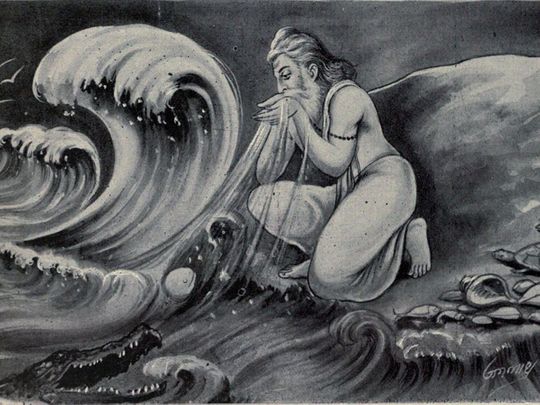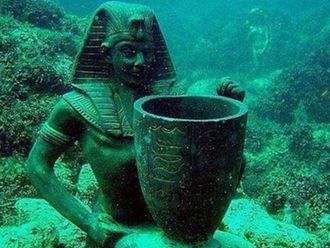
Long before scientific research and search engines like Google, when children around the world asked their parents why sea water was so salty, they received some truly creative, bizarre explanations.
Click start to play today’s Spell It, where you can find the word ‘salty’.
Today, we know that dissolved salts in rivers and surface runoff flow into the oceans, and deep-sea hydrothermal vents release saline emissions. Not an interesting explanation to a four-year-old, by any means. Instead, folk tales in the past made up intriguing origins for salt in the sea. Here are a few to note:
1. Nordic folktale: The giantess
A pair of Nordic giantesses, Fenja and Menja, were enslaved by an evil king. He forced them to work a magic millstone that ground out wealth and prosperity for King Frodi – and he never granted them a break. One day, finally fed up, the giantesses cursed the king and appealed to the sea king for help. He helped them grind out an entire army that destroyed King Frodi, and then welcomed the giantesses aboard his massive ship. In return for his help, he asked them to grind salt – so much was made that the ship grew too heavy, and sank, dumping its salty cargo into the sea. Et voila, that’s how a salty ocean was formed!
2. Filipino folktale: A doomed dowry
When the world was still a relatively young place, and all the seas were full of fresh water, there lived a selfish old woman, on a lonely island in the middle of the Visayan Sea, in the Philippines. She was the only one person in the world to own a cave that produced salt – and it made her very wealthy. When a sea deity’s son, named Marag-sa-tubig, saw her daughter Aliwan, he was smitten and wanted to marry her. But the greedy old woman demanded 100 boatloads of gold in exchange for Aliwan’s hand. Marag-sa-tubig tried to get his hands on gold, but had no luck. Desperate, he asked his best friend, the monsoon deity, to wreck any gold-carrying ships so that he could collect the gold for the dowry. He did as he was asked, and began a storm that didn’t end. Many ships sank, and Marag-sa-tubig almost reached his goal, when one day, in a cruel twist of fate, Aliwan was onboard one of the ships that sank. Distraught, Marag-sa-tubig grieved for his lost love, and forgot to tell the monsoon deity to stop the storm. Eventually, it swept over the island with the salt cave, drowning it completely, and turning the seas salty forever.
3. Indian folktale: Agastya’s aid
In a battle from Hindu mythology, between deities and demons, the demons quickly realised they were losing. They dashed to their hideout under the sea, where the deities couldn’t reach them. So close to victory, the deities didn’t want to give up. So, they called upon the powerful sage Agastya, who assisted by drinking the entire ocean, and revealing the demons in their hide-out. They were swiftly defeated, and at the end of the battle, when it was time to return the water, Agastya was called upon again. He spewed it back out, and the ocean has been salty ever since.
What do you think of these folktales? Play today’s Spell It and tell us at games@gulfnews.com.







